Successful brands put the customer first.
They monitor their customers’ behaviors and leverage their needs to enhance the buying process. You can also boost your revenue by optimizing the customer experience.
If you want to take this concept one step further, you need to focus on one important element that will increase sales.
Personalization.
Personalizing the customer experience is a winning strategy. In fact, 96% of marketers agree that their efforts to personalize their customers’ experience advance their relationships with customers.
Furthermore, 88% of marketers say they’ve seen a measurable improvement in their businesses after implementing customer personalization tactics.
But only 33% of businesses feel confident they have the tools to properly personalize the customer experience.
That’s what inspired me to write this guide.
Some of you may already know you need to create a more personalized experience for your customers, but you just don’t know what to do. Or maybe you’re trying to improve your existing efforts.
Regardless of your situation, I’ll explain what you need to do.
These are the best ways to increase sales by accommodating the needs of your customers and personalizing their experience.
Encourage your customers to create profiles
One of the first things you need to do is allow your customers to create profiles on your platform. Those profiles will help you implement other strategies as we continue through this guide.
Once the accounts are created, you’ll be able to monitor the behaviors of your customers based on their profiles.
Your customers are perfectly comfortable with you tracking their habits as long as it’s improving their experience.
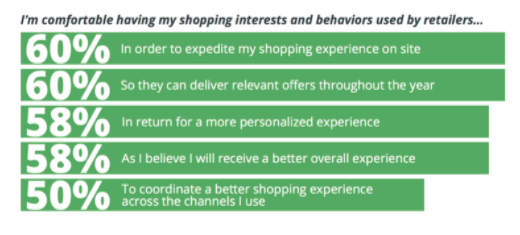
As you can see from these numbers, customers want you to:
- make it easier for them to shop
- give them relevant offers
- provide them with a more personalized experience
- improve their experience on multiple channels
Not only are your customers comfortable with you monitoring their behaviors through their profiles, but they actually expect it. In fact, more than half of consumers say they expect brands to anticipate their needs so they can receive relevant suggestions.
You’ll eventually be able to recommend products based on shopping and browsing behavior, but we’ll discuss that in greater detail later.
The best way to encourage your customers to create accounts is by making it as easy as possible for them.
They don’t want to take tons of unnecessary steps to set up their accounts. Make sure you limit your form fields needed for the account creation.
Think about what information you need from the customer that will help you personalize their experience.
Basically, anything they’d provide you with during an optimized checkout process is enough to create a profile.
Add a simple checkbox to the checkout that says something like “create a customer profile” to accomplish this.
Both you and your customers will benefit from this option. The personalized content on their profiles will improve their experience and ultimately drive more sales.
Segment your email subscribers
Collecting email addresses needs to be a priority for your business. But if you want to personalize the customer experience, you need to make sure you’re delivering relevant content to their inboxes.
The best way to do this is by segmenting your email lists:
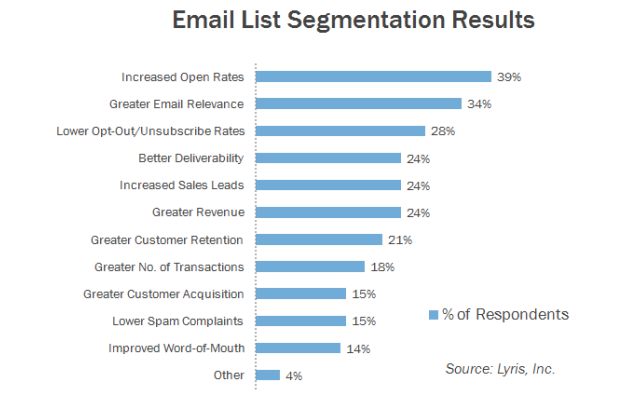
Although everyone who signs up to receive emails from your company might be interested in your brand, it doesn’t mean they have the same wants and needs.
You need to learn how to write marketing emails that don’t get marked as spam.
Grouping your subscribers into separate lists will ensure they don’t receive irrelevant information.
Let’s take customer profiles as an example. If a customer creates a profile during the checkout process, you’ll know their address because they need to provide you with shipping and billing information.
Your customers in Texas shouldn’t be getting the same emails as your customers in New Hampshire if your company is advertising a winter sale.
Those subscribers in Texas don’t care about discounted winter hats and ski pants.
That’s why segmented email campaigns can result in a 760% revenue increase.
Marketers say 58% of their revenue comes from emails that are properly segmented and targeted.
Recent studies show the differences between segmented emails compared to non-segmented campaigns.
Segmented emails have:
- 14.3% more opens
- 101% more clicks
- 4.7% fewer bounces
- 9.4% fewer unsubscribes
Higher opens and clicks paired with fewer bounces and unsubscribes put your company in a great position to increase sales.
Store information for faster checkouts
Again, customer profiles are important here.
Make sure you ask for the information required to complete a purchase only once. After that, you can store the information to expedite the purchasing process in the future.
Each step a customer has to take to buy something decreases the chances they’ll complete this action.
Having to enter their name, address, and credit card information into your platform every time is tedious. The whole reason why they created a profile was to improve their experience.
Take a look at how Delta uses this strategy:

By saving credit card information in their customer profiles, people can book a flight fast and easily. They don’t even need to have their cards on them.
Every ecommerce company needs to incorporate this strategy.
Customers will be able to add items to their carts and complete transactions with just a few clicks. This will help you improve your conversion rates and drive more sales.
Implement geotargeting practices
As I explained earlier, you can use the customer’s location to personalize their experience.
In addition to segmenting your email lists by location, you can also tailor the content on your website based on the country your customers are browsing from.
Take a look at this example from the SAXX website:

Their customers are primarily located in the United States and Canada.
While the two countries may be similar, the company still wants to offer tailored customer experience based on the location of their customers.
For example, Canadian customers will want to see measurements of clothing in centimeters since they use the metric system. And people browsing in the United States will see “color,” while the Canadians will see “colour.”
Yes, any English-speaking person can understand American English, but not having the site customized to the customer location can still hurt the company’s sales.
By allowing its website visitors to choose their country, SAXX ensures they’ll be shown the right content.
Those of you who have an international brand need to take this process one step further. Look at the options on the Nike website:
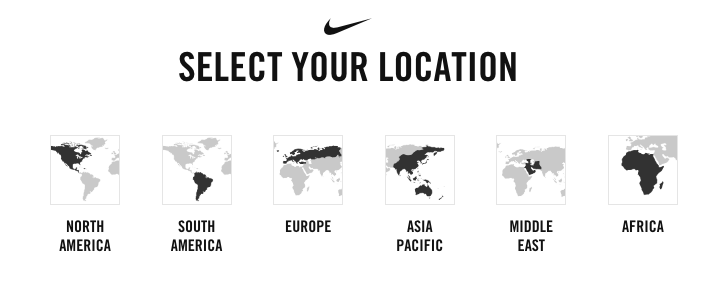
Your website isn’t the only platform that can be personalized based on location.
You can use your mobile app to pinpoint the exact location of your customers as opposed to broader locations, e.g., the state or country.
When someone downloads your app, ask them to agree to share their location with you so you can track it. Then, you can send them notifications using geofencing technology.
With geofencing, you can set up an area around one of your store locations. When an app user enters the location, they’ll get a notification that encourages them to make a purchase.
For example, let’s say you own a restaurant chain.
Someone with your mobile app walks within a block of one of your locations during lunch time. You can send them a discount off their lunch purchase that day.
Create a customer loyalty program
When you’re implementing customer personalization tactics, you shouldn’t aim to generate a one-time sale.
You want these efforts to lead to customer retention, resulting in recurring purchases. That’s why you should come up with an effective customer loyalty program.
Studies show 82% of consumers are more likely to buy from brands offering loyalty programs.
Plus, loyal customers spend more money. Just look at these numbers:
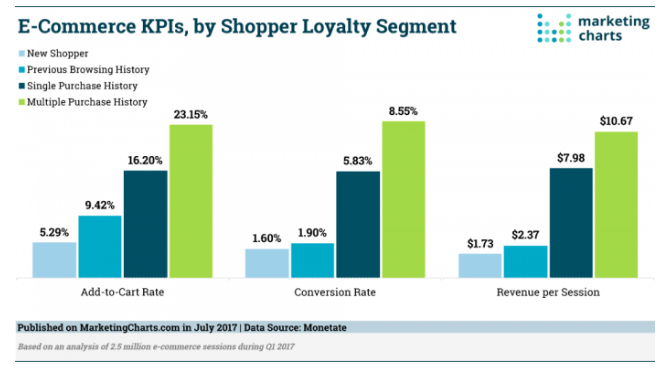
Customers who have purchased from your brand multiple times add items to their carts at a higher rate, have higher conversion rates, and generate more revenue per shopping session.
You can set up your loyalty program in a few different ways.
The most basic option would be to give your customers a reward after a predetermined number of visits or purchases. You’ve seen these before.
You may go to a local food truck outside of your office for lunch. They probably have some kind of a punch card that rewards you with a free sandwich on your tenth visit or some other reward scheme.
But the best customer loyalty programs reward their highest spending customers.
Set rewards based on spending tiers. This will give your customers an incentive to spend even more money.
Allowing them to track their progress on their customer profiles or from the mobile app will improve their personalized shopping experience.
Listen to customer feedback
According to research, 68% of consumers abandon a business because they don’t feel the brand cares about them.
That’s why you should use surveys and interviews to generate more money for your business. This will show your customers you value their opinions.
However, just asking your customers to provide feedback isn’t enough.
You actually need to make changes based on those suggestions.
But first, you need to analyze the results of the feedback. Don’t just implement changes for the sake of it—that won’t deliver a return on your investment.
But if you notice that a large percentage of your customers are providing similar feedback and suggestions to improve your process, you should take that very seriously.
Implementing these changes will make your customers realize they are part of your process and create a bond with your brand.
Recommend relevant products
I briefly mentioned this earlier, but I wanted to discuss it again in greater detail.
You already know you need to use the information provided in the customer profiles to personalize content for them. But there are certain pieces of extremely valuable information that you can’t get via a form field: what the customers are looking for and what they are buying.
But you can find out that information through the browsing and purchase histories of your customers. That information will allow you to suggest relevant products to them.
If you do, consumers will be more likely to buy from your brand, whether you operate online or in person:
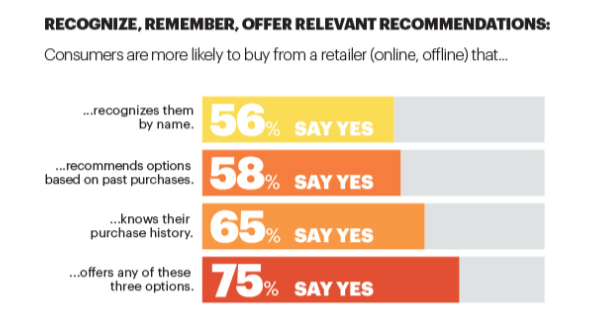
Recommending products to your customers also narrows their options.
Roughly 40% of consumers left a website to buy from a competitor instead because they felt overwhelmed by too many options. Don’t let this happen to you.
If one of your customers recently purchased a surfboard and a wetsuit, it’s safe to say they’ll be spending time at the beach and in the water. So you could suggest something like a paddleboard and sunscreen because it’s relevant to their purchase history.
Let your customers be part of the personalization process
Combine your personalization strategy with an interactive process.
If a customer doesn’t have a profile, you can still get more information from them to personalize the content they see.
For example, Warby Parker has a feature on its website I love. Obviously, glasses aren’t a one-size-fits-all product.
But with so many options, it can be overwhelming for consumers to find exactly what they’re looking for. To help narrow the results, the brand asks their customers some questions.
First, it asks if you’re browsing for men’s or women’s styles. Then, the questionnaire asks the type of fit you’re looking for.
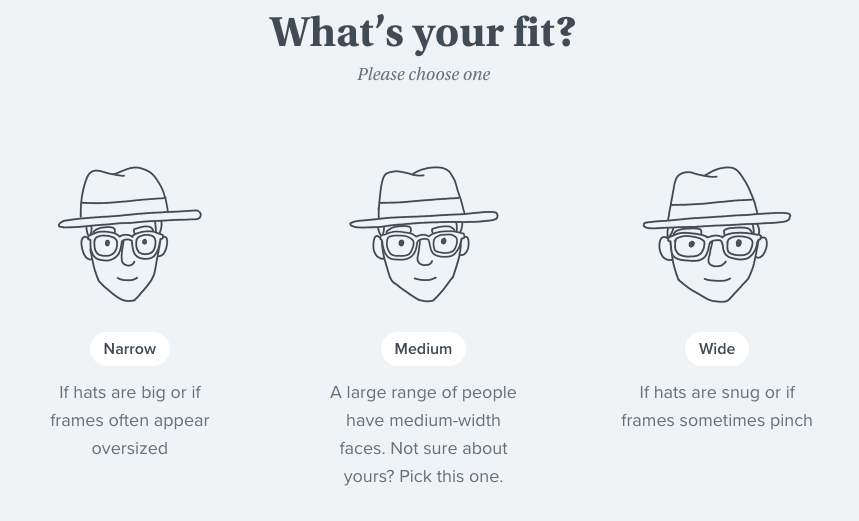
As you can see, the cartoon faces are all of men because that’s what I selected in the first step. It’s another subtle personalized touch.
Next, they want to know your color preferences for glasses.
After that, you need to provide them with the shapes of frames you prefer the most.
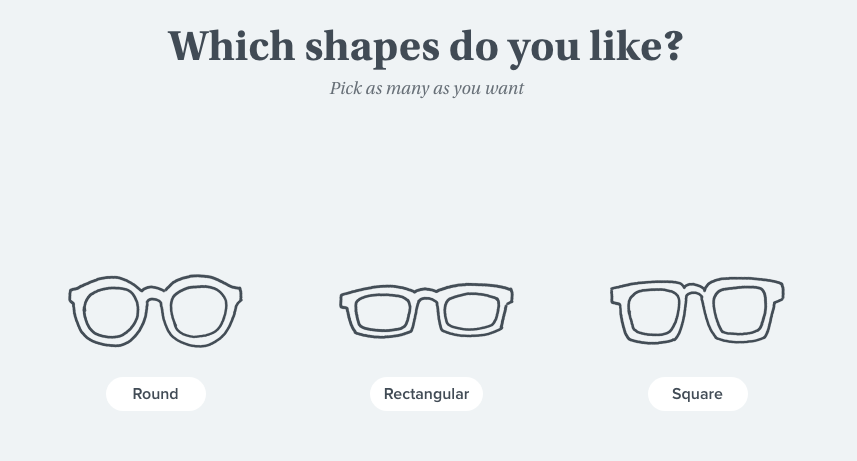
The questions get even more detailed.
Warby Parker asks when you had your last eye exam. It also wants to know if you’re interested in eyeglasses, sunglasses, or both.
This relates to my last point about narrowing down the results. You don’t want to overwhelm your customers.
Now the product results will be based on the preferences chosen by the customer.
Write content from the first person perspective
Try to establish a personal relationship with your customers.
In theory, this is much easier for small business owners who actually see their customers on a regular basis.
But even if you’re an ecommerce shop or a global brand, there are still ways for you to create this type of relationship based on how you communicate with your customers.
By writing content from the first person perspective, just like I do when I blog, you will make your customers feel more comfortable. Write as if you’re talking to a friend.
You don’t need to be formal all the time.
Don’t get me wrong: you should still write using proper grammar and avoiding slang terms. Just write as if you’re having a casual conversation.
Do this with your emails, blogs, and content on your website.
Sign emails using your name. Your emails should be coming from yourname@yourcompany.com.
Don’t send marketing emails from non-personalized addresses, like support@company123.com.
Craft personalized email subject lines and content
Let’s continue talking about your email marketing strategy.
In addition to segmenting your lists and writing content from the first person perspective, you need to learn how to craft subject lines that generate results.
After all, if nobody opens your emails, they’re useless.
Research shows that personalized subject lines have tons of benefits:
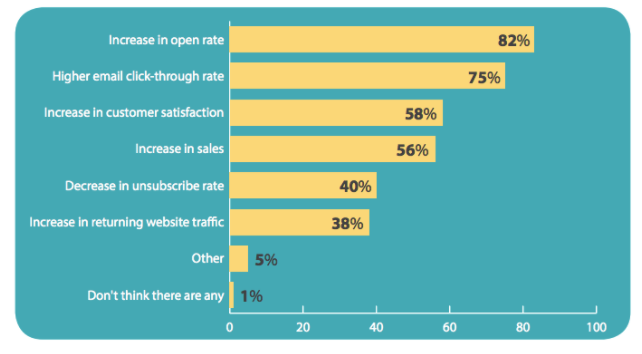
Your messages will get opened at higher rates and have more clicks.
As you can see from the graph, these clicks ultimately lead to improved customer satisfaction and higher sales as well.
Conclusion
Your customers want and expect a personalized shopping experience. It’s your job to deliver this to them.
Start by encouraging customers to create profiles on your website. When you add subscribers to your email list, segment them based on the information they provided you with.
Let customers store information in their accounts, expediting the checkout process.
Use geotargeting to show website visitors and app users personalized content based on their locations.
Implement a customer loyalty program. Listen to the feedback your customers give you.
Monitor their browsing and purchase histories to recommend relevant product suggestions.
Create an interactive personalization process to help your customers narrow product results.
Learn how to write content and email subject lines with a personal message.
Once you implement these personalization strategies, you’ll enhance the customer experience and ultimately drive more sales.
